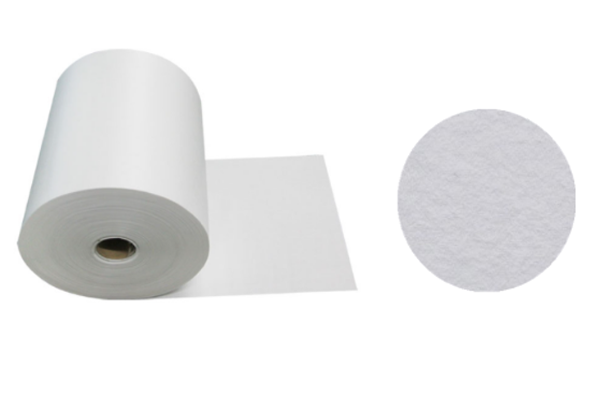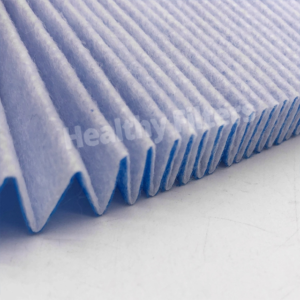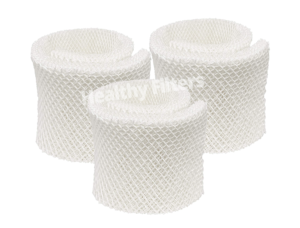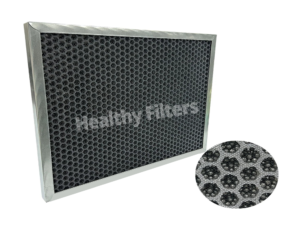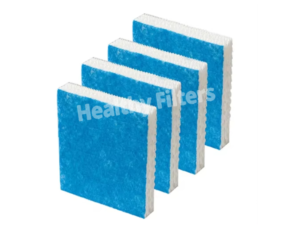Glassfiber filter paper is a high-performance filter material made of ultra-fine glass microfibers through a wet-laid web process. With its excellent high temperature resistance, chemical stability and high-precision filtration ability, it has become the core filter medium for high-efficiency air filtration (HEPA/ULPA), laboratory analysis and harsh industrial environments. Its microporous structure formed by fiber interlacing combines high-efficiency interception with low air flow resistance, and is suitable for scenes with extremely high requirements for cleanliness and weather resistance.
Core characteristics and advantages
High-precision filtration performance
Fiber structure: Glass fiber diameter is 0.5-5μm, and uniform micropores of 0.3-10μm are formed by random interlacing, which can efficiently intercept PM2.5, bacteria, smoke and submicron particles (such as virus carriers), with a filtration efficiency of more than 99.97% (in compliance with EN 1822 H13-H14 or ISO 29463 standards).
Electrostatic enhancement: Some models are treated with electrostatic electret, and adsorb 0.1-0.3μm ultrafine particles through Coulomb force, significantly improving the filtration efficiency (such as PM0.3 capture efficiency ≥99.99%).
Extreme environment tolerance
High temperature resistance: Long-term working temperature can reach 250℃ (short-term tolerance of 350℃), suitable for high-temperature ovens and industrial furnace exhaust systems.
Chemical inertness: Resistant to strong acids, strong alkalis, organic solvents and corrosive gases (such as SO₂, Cl₂), suitable for corrosive environments such as chemical industry and electroplating.
Moisture-proof and flame-retardant: The fiber itself does not absorb water, and the hydrophobic treatment model can withstand humidity >90%; the flame retardant grade is UL94 V-0, avoiding the risk of fire in high temperature environments.
Low resistance and long life
The pore size distribution is uniform, and the initial pressure difference is as low as 50-150Pa (depending on the gram weight and thickness), reducing system energy consumption.
High mechanical strength and fatigue resistance, support pulse cleaning or vibration cleaning (limited to specific models), extend the replacement cycle to 1-3 years.
Typical application areas
Clean room and biosafety:
HEPA/ULPA filter core material, maintain ISO Class 5-3 cleanliness level, used in chip factories, vaccine production lines, operating rooms.
Biosafety cabinets, PCR laboratories, intercept aerosols and pathogenic microorganisms.
Industrial dust removal:
High-temperature smoke treatment (such as steel plant sintering machine, waste incineration exhaust), filter heavy metal particles and dioxins.
Welding smoke, laser cutting smoke submicron particle capture, protect workers’ health.
Laboratory analysis:
Liquid/gas precision filtration (such as HPLC solvent purification, air microbial sampling), strict pore size classification (0.1μm-10μm).
Corrosion-resistant filter membrane support layer, used for strong acid and alkali solution filtration.
Energy and transportation:
Gas turbine intake ultra-high efficiency filtration to prevent salt spray and sand and dust from eroding blades.
Nuclear power plant ventilation system, blocking the spread of radioactive particles.
Selection and maintenance guide
Key selection parameters
Filtration accuracy: select the nominal pore size of the filter paper according to the target particle size (such as 0.3μm corresponds to HEPA H13 level).
Weight and thickness: conventional weight 80-200g/㎡, thickness 0.3-1.2mm; thickened layer (≥1.5mm) can be selected for high dust holding scenarios.
Functional coating:
Hydrophobic/oleophobic type: used for oil mist filtration or high humidity environment (contact angle>120°).
Antibacterial type: add silver ion coating to inhibit microbial growth (in accordance with ISO 20743 standard).
System adaptation design
Air volume matching: calculate the filter paper area and folding density based on the system air volume (m³/h) (such as Z-shaped pleated structure increases the effective area).
Sealing: use polyurethane or silicone edge sealing to prevent side leakage and ensure that the filtration efficiency meets the standard.
Maintenance and replacement strategy
Pressure difference monitoring: Install a pressure difference sensor, and replace it when the pressure difference reaches 2-3 times the initial value (usually 300-500Pa).
Cleaning method: Non-electret filter paper can be back-blown with compressed air (pressure ≤ 0.3MPa), and the electret model should avoid contact with liquid to prevent charge loss.
Waste treatment: High-temperature incineration (> 600℃) can be decomposed into harmless glass slag to avoid secondary pollution.
Glass fiber filter paper has become the gold standard for high-demand filtration scenarios with its core competitiveness of **”high efficiency, extreme resistance, and long life”. With the integration of nano-coating technology and composite materials, it is gradually expanding to emerging fields such as lithium battery separators and high-temperature catalytic carriers, and continues to promote the precision and multifunctional development of filtration technology.

